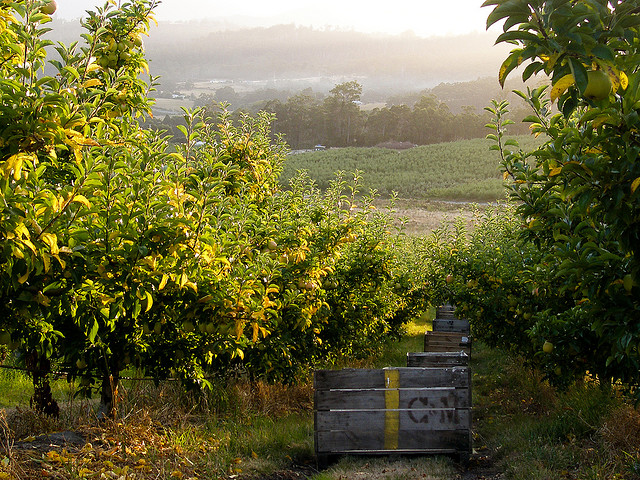Yesterday’s post on Chobani Yoghurt rescuing a town in Upper New York state raises some questions about what happens when a major industry leaves.
For South Edemston, the question went unanswered as Hamdi Ulukaya and Chobani saved the day, but other towns haven’t been so lucky.
Australia’s Goulburn Valley, about a hundred miles north east of Melbourne, may be about to find out as the main local fruit cannery will close down unless the state and Federal governments each contribute $25 million to an investment plan.
Closing the region’s major cannery will have dire consequences for the local economy as the industry has been a major customer for the local fruit industry. Without the cannery, many of those peach, pear and apple growers have nowhere to sell their produce.
Already farmers are bulldozing their trees and grubbing up the roots as the market works against them.
So what happens to the Goulburn Valley if the canning industry leaves? Do the orchards get turned over to goats?
There is a precedent in Australia for this, in Tasmania the ‘Apple Isle’ has seen its orchard industry steadily decline from the days of peak production in 1964.
A touching story in The Griffith Review by Moya Fyfe, the daughter a former Tasmanian apple farmer, describes when her father’s orchards were ripped up.
So in the winter of 1974, his life’s work, and that of his father, was bulldozed into windrows of gnarled stumps and roots. Acre after acre of once productive apple trees, captured in a photograph hanging on my parents’ dining room wall as picture-book hills awash with blossoms above North West Bay, were twisted and torn from the ground and left in undignified heaps to rot.
Moya’s father was given an exit package – a cash payment to find something else to do – by the state government. Something that many agricultural communities around the world have become familiar with.
The problem for Tasmanians was that there wasn’t really much else to do. At the time Moya’s farm was ripped up there was a belief the state would become an industrial powerhouse on the back of cheap hydroelectricity, but that never happened.
Tasmania’s economy continues to struggle and Moya’s article was part of a Griffith Review edition focusing on the state’s struggles.
The most pubilicised essay was a scathing analysis of the state’s culture by Professor Johnathan West, who identified the real problem for Tasmania as being a dependency mindset.
These numbers suggest that as little as a quarter to a third of Tasmanian households derive their livelihood from the genuine private sector. Of them perhaps a third gain their income from wholesale and retail trade and associated logistics, another third from residential and commercial construction and maintenance. The clients of both these groups depend largely on public-sector incomes, leaving only about 10 per cent of all households making a living from the traded private sector.
Interestingly both Johnathan West and Moya Fyfe are employed by the University of Tasmania, which probably proves the Professor’s point.
Overall Tasmania relies upon Federal government funds to survive, receiving over $1.50 in payments for ever dollar remitted in taxes; in that it joins half of Australia’s states and territories in being economically dependent on the Federal taxpayer.
That’s not a good sign for the Goulburn Valley or for the state of Victoria which increasingly is appearing to be to Australia what Spain was to the European Union circa 2007 or Miami to the US in 1927. When the Melbourne property market pops, the region could be in deep trouble.
For much of regional Australia – like disadvantaged parts of the European Union or the United States – communities have become dependent on transfers from the central government, the sustainability of that is being tested now.
It may well be that South Edmenson’s experience with Chobani illustrates the most sustainable way governments can support these regions, attracting entrepreneurs and new industries into communities that are being left behind is far better than leaving them on welfare.
Image courtesy of elcapitain through Flickr

Leave a Reply